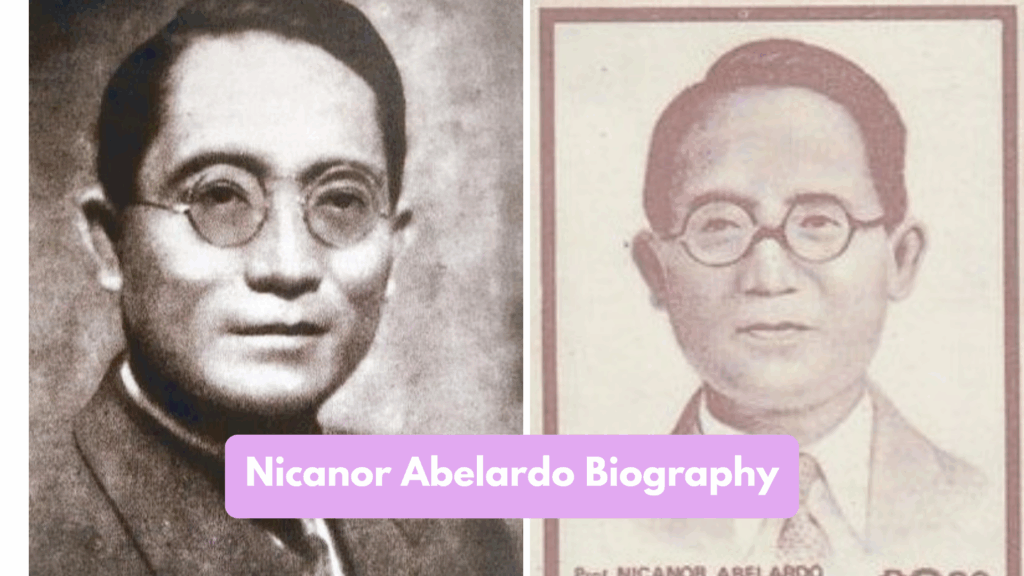Nicanor Abelardo Biography: Death, Wife, Children, Wikipedia, Education

Nicanor Santa Ana Abelardo (February 7, 1893 – March 21, 1934) is widely regarded as one of the most influential Filipino composers of the early 20th century.
Born in Bulacan, Philippines, he displayed musical talent from a very young age and would go on to bring the traditional Filipino love-song genre — the kundiman — to new heights as an art song. He composed more than 140 works, taught future generations, and left a legacy that continues in Philippine music today.
This biography will explore Abelardo’s early life, education, major works, later years, his legacy, and answer frequently asked questions to provide a full picture of this remarkable composer.
Early Life and Musical Beginnings
Nicanor Santa Ana Abelardo was born on February 7, 1893 in San Miguel de Mayumo, Bulacan, in the then-Captaincy General of the Philippines. He was the eldest of eight children born to Valentin Abelardo (a photographer) and Placida Santa Ana (a church singer).
From a very early age, music was central in his life. His father taught him solfeggio, the bandurria and the guitar when he was five. By the age of six, he reportedly could play his father’s arrangement of Rossini’s William Tell Overture on guitar. His first composition, a waltz titled Ang Unang Buko, was written when he was eight and dedicated to his grandmother.
In 1902 his uncle, the painter Juan Abelardo, brought him to Manila to attend various schools and broaden his exposure; there he became known among “haranistas” (serenade-singers) for his skill.
Education and Rise in Manila
In 1908, Abelardo returned to Manila and took employment in smaller theaters and cinemas, quickly advancing to lead the orchestra at the Cine Majestic.
In 1916, he entered the newly-established University of the Philippines Conservatory of Music where he studied under Guy F. Harrison and Robert Schofield. During his studies, in 1917, he composed the melody for the university anthem U.P. Naming Mahal, which remains its hymn. By 1918 he was appointed assistant instructor in solfeggio and harmony at the UP Conservatory.
Major Works and Contribution to the Kundiman
One of Abelardo’s greatest contributions was his transformation of the Filipino kundiman — the traditional love song — into an art-song, elevating it to the same status as Western art-songs.
Some of his most celebrated works include:
- Nasaan Ka Irog? (1923) – a kundiman widely sung and loved.
- Mutya ng Pasig – another favorite, evoking the beauty of the Pasig River.
- Kundiman ng Luha – subtitled “Kundiman of Tears”, reflecting his emotional depth.
- Instrumental works such as his Violin Sonata (1931), showing his engagement with Western modernist influences.
His output is vast — over 140 compositions across vocal, instrumental, chamber, orchestral forms. By integrating Western harmony and form with Filipino melodic and emotional sensibility, Abelardo helped define a musical nationalist identity during the American colonial period.
Studies Abroad and Later Career
In May 1931, Abelardo left Manila for the United States, enrolling at the Chicago Musical College under Wesley LaViolette. He absorbed modernist musical trends — influences from the Second Viennese School, Hindemith and other post-romantic European composers.
Despite this, life in Depression-era Chicago was difficult — he returned to Manila in 1932 without earning his diploma due to insufficient academic credits. Upon returning, he resumed teaching at the UP Conservatory, and ran a boarding house (nicknamed “The Little Conservatory”) where he taught young composers such as Antonino Buenaventura and Lucino Sacramento.
Personal Life and Death
Abelardo’s personal life had its challenges. Alcoholism reportedly affected his health in later years. On March 19, 1934 he underwent surgery at the Philippine General Hospital and died on March 21, 1934 in Manila of heart failure. He was aged 41. He was buried at La Loma Cemetery.
Legacy and Impact
Abelardo’s influence continues strongly in Philippine music. The UP College of Music building (Abelardo Hall) is named for him, as is the main theater of the Cultural Center of the Philippines (Tanghalang Nicanor Abelardo). His redefinition of the kundiman elevated a folk/traditional form into high art, helping to shape Filipino musical identity in the 20th century. Many of his compositions remain part of Filipino cultural heritage, performed and recorded by contemporary artists.
FAQs
When and where was Nicanor Abelardo born?
He was born on February 7, 1893 in San Miguel de Mayumo, Bulacan, Philippines.
What is a kundiman and how did Abelardo influence it?
A kundiman is a traditional Filipino love song. Abelardo elevated it into an art-song form by infusing Western compositional techniques, making it more formally sophisticated while retaining Filipino emotional content.
What are some of his most famous compositions?
Some of his best-known works include – Nasaan Ka Irog?, Mutya ng Pasig, Kundiman ng Luha, and instrumental works like his Violin Sonata.
Did he study abroad?
Yes, he studied at the Chicago Musical College in 1931–1932, though he did not complete the diploma; his time there influenced his compositional style.
How many works did he compose?
He composed over 140 works across vocal, instrumental, and orchestral genres.
Conclusion
Nicanor Abelardo’s life, though tragically short, was one of profound musical achievement. From prodigious beginnings in Bulacan to shaping an entire musical genre, his journey reflects a deep merging of Filipino identity and Western art form. His elevation of the kundiman into an art-song form gave voice to Filipino emotion and nationalism in a time of colonial transition. Today, his works still ripple through Philippine culture, reminding us of the enduring power of melody, national identity, and creative excellence. For students of music, culture, or Philippine history, his life remains both inspiring and instructive.


